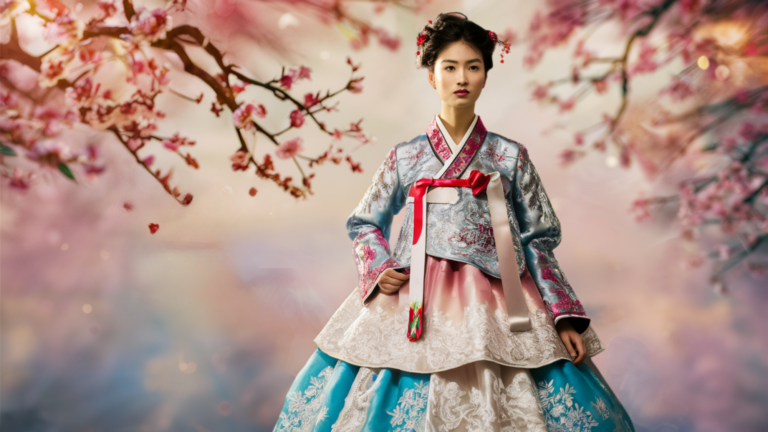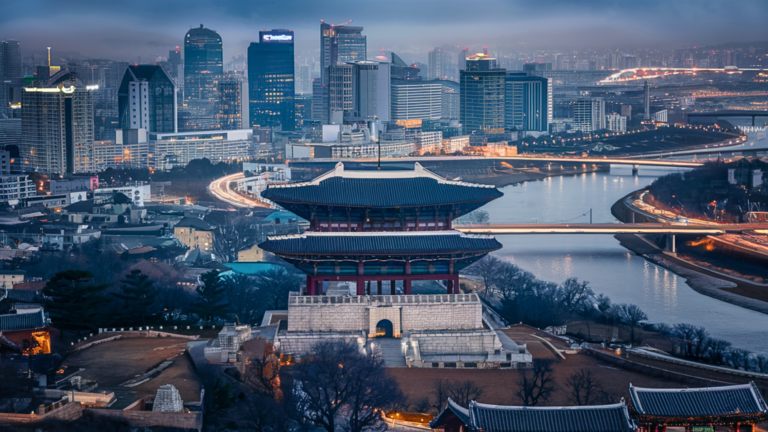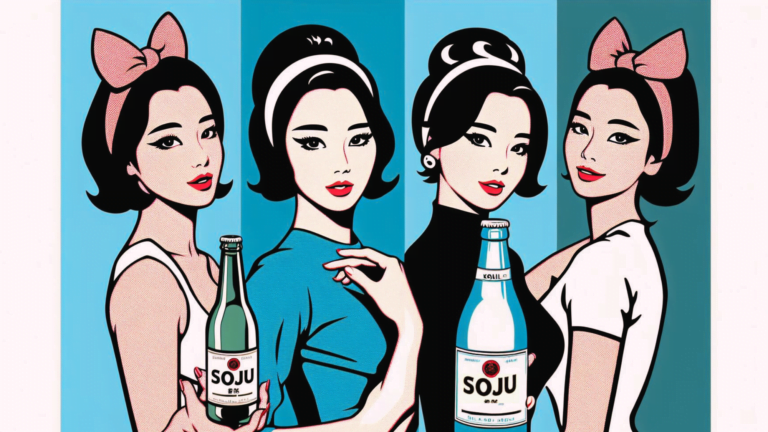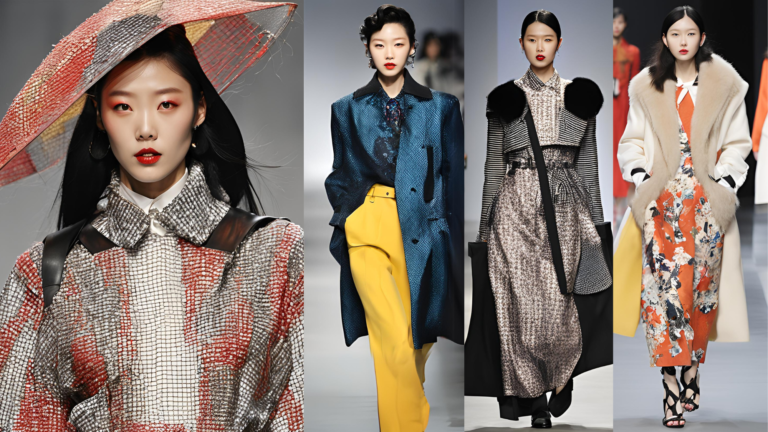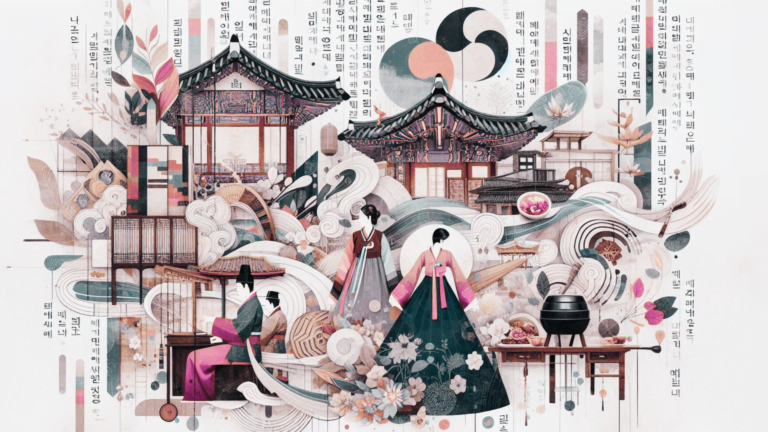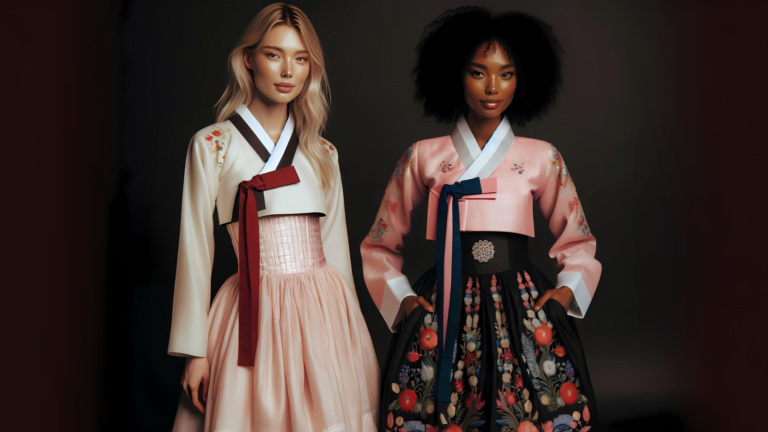Korean Culture Guide: Decoding Korea’s Rich Heritage
Getting Started: Your Korean Culture Guide Essentials
Korea’s cultural tapestry blends ancient wisdom with modern innovation, creating a vibrant society that honors tradition while embracing the future. This comprehensive Korean culture guide aims to provide an overview of the country’s rich heritage and modern developments. From historical roots to contemporary trends, we’ll explore the elements that shape Korean life.
As we delve into this guide, we’ll examine the historical, geographical, and philosophical influences that provide context for Korea’s cultural heritage. Whether you’re new to Korean culture or looking to deepen your understanding, this Korean culture guide offers insights into the nuances of Korean society.
Korean Culture Guide to Its History: Key Periods Shaping Korean Culture
Our Korean culture guide begins with a brief overview of Korea’s fascinating history. The Korean peninsula has a rich history spanning thousands of years. From the legendary founding of Gojoseon in 2333 BCE to the modern-day split between North and South Korea, the land has seen many kingdoms and dynasties rise and fall.
Key historical periods that have shaped Korean culture include:
Three Kingdoms Period
Goryeo Dynasty
Joseon Dynasty
Japanese Occupation
Korean War
Each era has left an indelible mark on Korean culture, contributing to the rich heritage visible today. As we explore further in this Korean culture guide, we’ll uncover how these historical events have profoundly influenced modern Korean society, from its customs and traditions to its rapid modernization and global impact.
Understanding these key periods is crucial for anyone seeking to grasp the depth and complexity of Korean culture. They provide essential context for the values, beliefs, and practices that continue to shape Korean life in the 21st century.
Korean Culture Guide: Geography and Its Influence on Korean Culture
Korea’s geography has played a significant role in shaping its culture. The peninsula’s mountainous terrain and coastal areas have influenced everything from traditional architecture to cuisine.

Mountains cover about 70% of South Korea, influencing housing styles and deep connection with nature

Seas surround the peninsula on three sides, contributing to a rich seafood culture
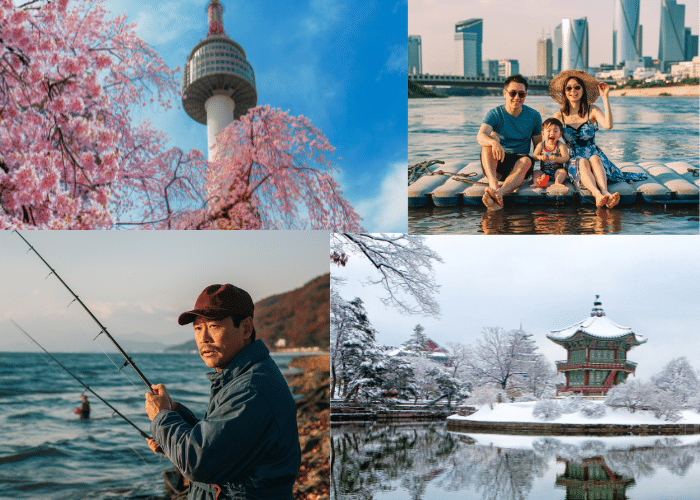
Four distinct seasons are reflected in seasonal customs, foods and festivals
This diverse landscape has nurtured a culture that values harmony with nature and adapts to seasonal changes. As we explore Korean culture further, keep in mind how these geographical features have molded Korean society.
Korean Culture Guide to Understanding Korean Society: Core Philosphical Values
To truly appreciate Korean culture, it’s essential to grasp the fundamental values underpinning Korean society. These values, deeply rooted in history and philosophy, continue to influence modern Korean life.
Confucianism and Its Modern Impact
Any Korean culture guide would be incomplete without exploring Confucianism’s impact on Korean society. Introduced during the Three Kingdoms period and becoming state ideology during the Joseon Dynasty, its principles still resonate in contemporary Korean society:
While modern Korea has evolved, these Confucian values continue to shape social interactions, business practices, and family dynamics. Discover how Confucian principles influence even the design of Hanbok and Hanok in our ‘5 Interesting Facts About Korean Culture‘ article.
The Concept of ‘Jeong’ and ‘Han’
Two uniquely Korean concepts provide insight into the emotional landscape of Korean culture:
Jeong (정): A deep, affectionate connection that develops between people who have a shared history. It’s often described as a type of lingering feeling, attachment, or bond that can’t be easily explained or broken.
Han (한): A complex emotion often described as a collective feeling of oppression and isolation in the face of overwhelming odds. It’s deeply ingrained in the Korean psyche, reflecting the nation’s tumultuous history.
These concepts influence interpersonal relationships, artistic expression, and even business practices in Korea. Understanding them offers a window into the depth and complexity of Korean emotional life.
By exploring these foundational aspects, we begin to unravel the intricate tapestry that makes Korea unique. As we delve deeper into specific cultural elements, keep these historical, geographical, and philosophical influences in mind – they provide the context for the rich cultural heritage we’ll continue to explore in this Korean culture guide.
Korean Culture Guide: The Five ‘Han’ Pillars
To truly grasp Korean culture, it’s crucial to explore the concept of the “5 Hans.” These five elements form the pillars of Korean cultural identity, each representing a unique aspect of Korea’s rich heritage. A comprehensive Korean culture guide must delve into these pillars to provide a holistic understanding.
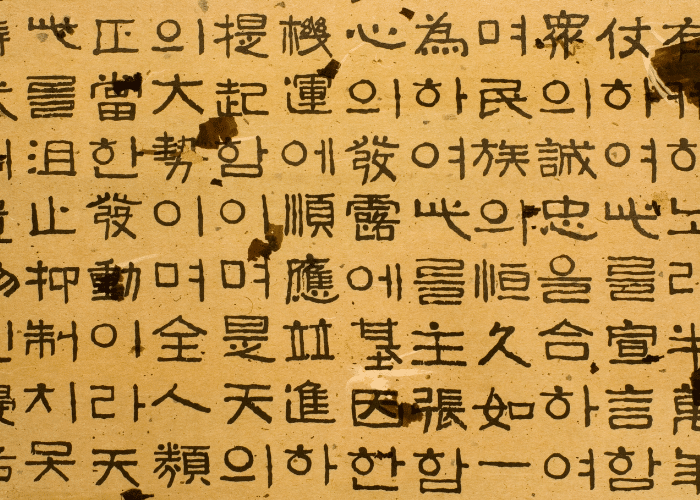
Hangeul (한글): The Korean alphabet, a testament to Korea’s linguistic ingenuity and commitment to education.
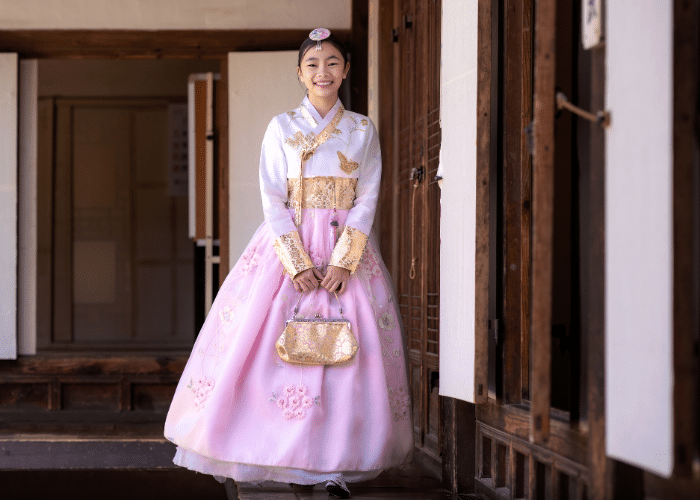
Hanbok (한복): Traditional Korean clothing, embodying the aesthetic values and social norms of Korean society.
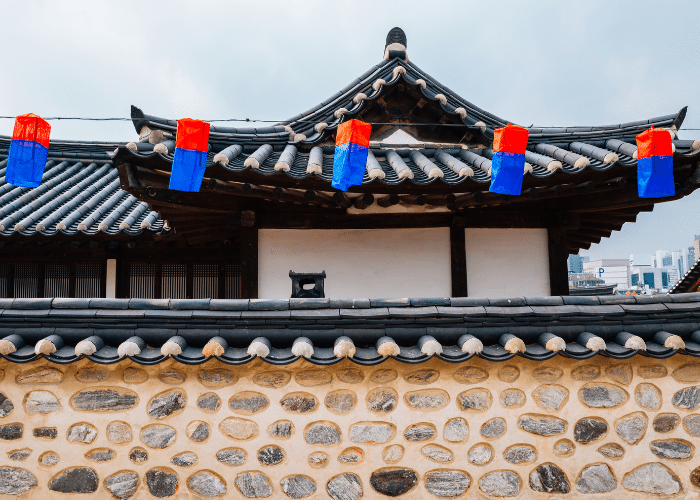
Hanok (한옥): Traditional Korean architecture, reflecting the harmony between human habitation and nature.
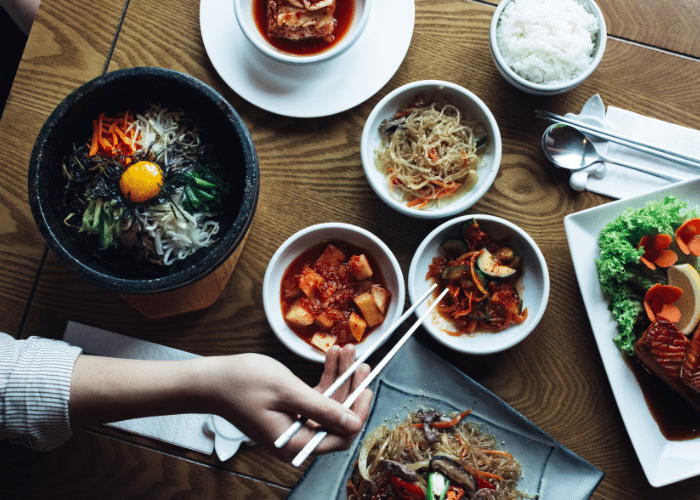
Hansik (한식): Korean cuisine, a flavorful representation of Korea’s geography, history, and philosophy of health.
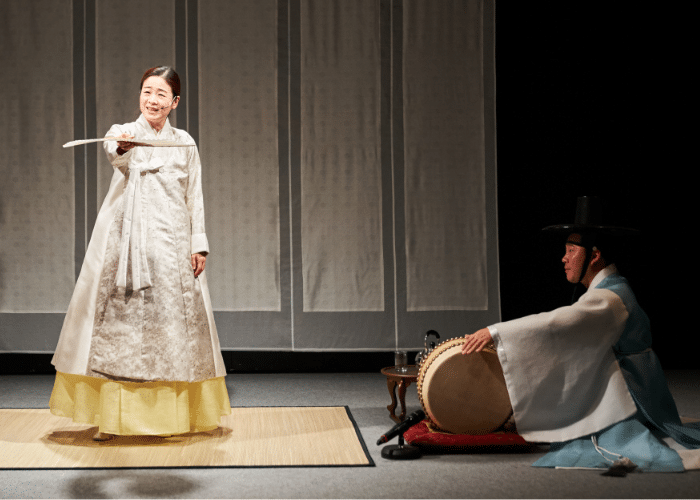
Hanguk Eumak (한국음악): Korean music, from traditional court music to modern K-pop, showcasing the evolution of Korean artistic expression.
These five Hans form the core of Korean cultural identity and will be referenced throughout our Korean culture guide. For a deeper exploration of each Han and their cultural significance, check out our article on 5 Interesting Facts About Korean Culture.
Korean Culture Guide to Navigating Modern Korea: A Balance of Tradition and Innovation
Our Korean culture guide now explores the fascinating blend of tradition and modernity in contemporary South Korea. Modern South Korea presents a fascinating juxtaposition of deeply rooted traditions and cutting-edge modernity. This blend creates a unique cultural landscape where ancient palaces stand in the shadow of gleaming skyscrapers.
Balancing Ancient Traditions with Rapid Modernization
Korea’s rapid economic development, often referred to as the “Miracle on the Han River,” has transformed the country into a global technological powerhouse. However, this swift modernization hasn’t erased Korea’s traditional values and practices:
This balance between old and new isn’t always seamless, sometimes creating generational gaps or cultural tensions. However, it’s this very dynamic that makes contemporary Korean culture so vibrant and unique. Explore more about how Korea blends tradition and modernity in our ‘5 Interesting Facts‘ article. Korean fashion, or K-Style, has become a global phenomenon. Explore our Complete Guide to K-Style Fashion to learn how traditional and modern elements blend in Korean fashion.
Riding the Korean Wave: Your Guide to K-pop, K-dramas, and Modern Korean Culture
The Korean Wave, or Hallyu, refers to the global popularity of South Korean culture, particularly in the realms of entertainment and pop culture. This phenomenon has played a significant role in shaping global perceptions of Korea and Korean culture.
Impact of K-pop and K-dramas on Global Perception
K-pop (Korean popular music) and K-dramas (Korean television series) have become major cultural exports, influencing everything from fashion trends to language learning:
While Hallyu has brought many positive aspects of Korean culture to light, it’s important to recognize that it represents just one facet of Korea’s rich and diverse cultural landscape. The global popularity of K-pop and K-dramas offers an entry point for many to explore the deeper aspects of Korean history, tradition, and society.
By understanding these various aspects – from the traditional 5 Hans to the modern phenomenon of Hallyu – we can begin to appreciate the complexity and dynamism of Korean culture in the 21st century.
Korean Culture Guide: Essential Korean Etiquette Tips
Understanding and respecting Korean etiquette is crucial for anyone looking to deeply appreciate Korean culture. These customs, rooted in Confucian principles, govern social interactions and help maintain harmony in Korean society. For more specific etiquette tips related to wearing Hanbok and dining customs, check out our ‘5 Interesting Facts About Korean Culture‘ article.
Social Hierarchies and Age-based Respect
Korean society places great importance on social hierarchies, particularly those based on age:
Dining and Gift-Giving Customs
Dining and gift-giving in Korea also involve numerous etiquette rules:
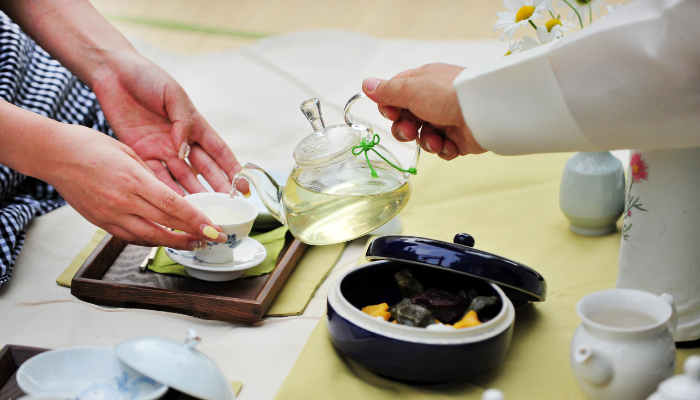
Dining etiquette rules:

Gifting etiquette rules:
Your Guide to Korean Festivals and Holidays: Celebrating Culture Year-Round
Korean festivals and holidays offer insight into the country’s cultural values and traditions. Some key celebrations include:
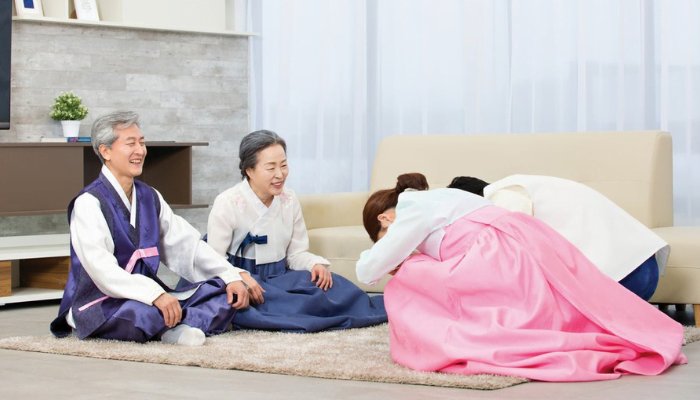
Seollal (Lunar New Year): Family gatherings, traditional foods, and paying respects to ancestors
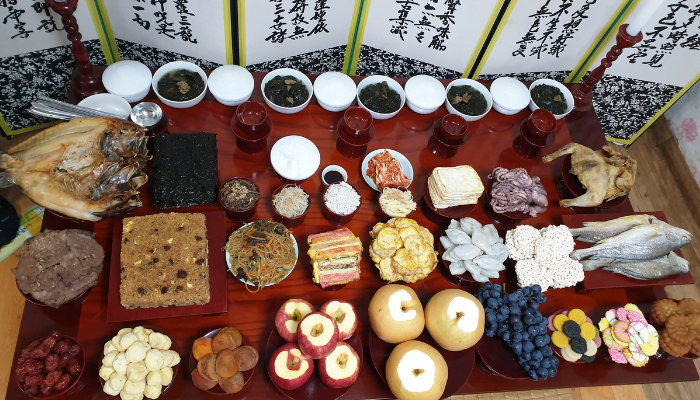
Chuseok (Harvest Moon Festival): Similar to Thanksgiving, featuring family reunions and honoring ancestors
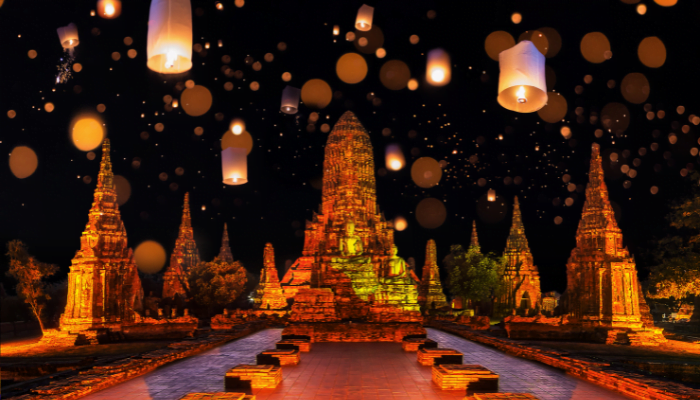
Buddha’s Birthday: Lantern festivals and temple visits
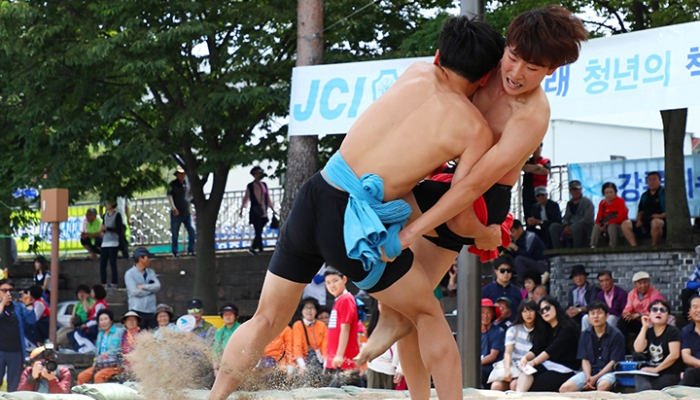
Dano Festival: Early summer celebration with traditional wrestling and swing riding
Korean Culture Guide to Appreciating Korean Art and Aesthetics
From ancient traditions to modern expressions. Korean art reflects a deep appreciation for nature, simplicity, and harmony::
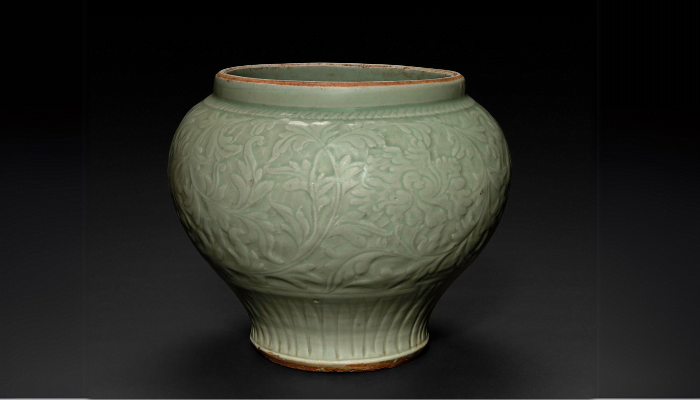
Traditional arts: Calligraphy, pottery (including celadon), landscape painting

Performance arts: Pansori (narrative singing), mask dance dramas
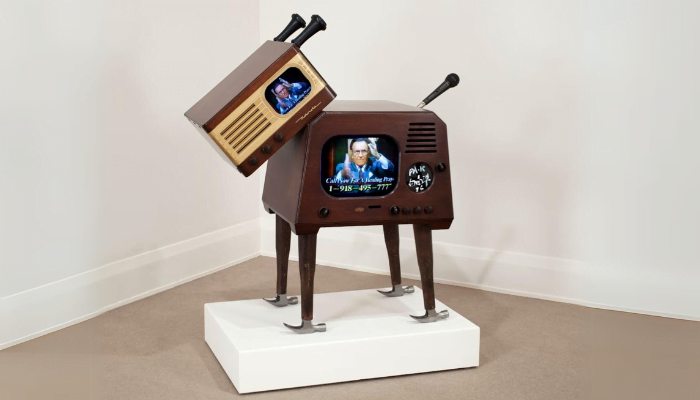
Modern arts: Fusion of traditional and contemporary styles in visual arts, music, and dance. (Image above: Dogmatic by Nam June Paik, © Chrysler Museum of Art)
The principle of “harmony between nature and humans” is particularly evident in Korean art, where artists strive to capture the essence of their subjects rather than create exact replicas. This philosophical approach to art extends beyond visual mediums, influencing architecture, garden design, and even everyday objects. Furthermore, the continuous reinterpretation of traditional motifs and techniques in contemporary Korean art demonstrates the dynamic nature of Korea’s cultural expression, blending reverence for the past with innovation for the future.
Further Reading:
– Curious about some intriguing aspects of Korean culture? Explore our 5 Interesting Facts about Korean Culture.
– Learn about one of Korea’s most iconic beverages in our article on Soju: Korea’s Beloved National Drink.
Your Ongoing Journey: A Guide to Deepening Your Appreciation of Korean Culture
As we wrap up this Korean culture guide, remember that understanding Korean culture is an ongoing journey of discovery and appreciation. For Koreaphiles, understanding Korean culture goes beyond enjoying K-pop or Korean dramas; it involves delving into the historical, philosophical, and social aspects that shape modern Korea.
Embracing Korean culture as a Koreaphile means:
Remember, becoming a true Koreaphile is a journey, not a destination. Each new piece of knowledge or experience adds to your understanding, allowing for a more nuanced appreciation of this fascinating culture.
Keep an open heart and mind as you continue exploring Korean culture, whether through language learning, travel, or engaging with Korean arts and media. The more you learn, the more you’ll discover about the rich tapestry of Korean culture. This Korean culture guide is just the beginning of your journey into the captivating world of Korea.


